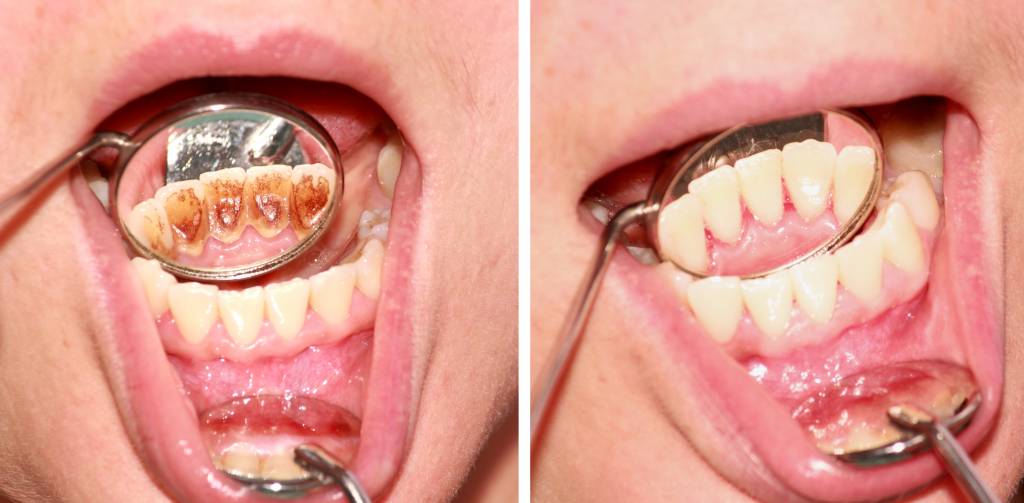Gum disease is an inflammation of the gum line that can progress to affect the bone that surrounds and supports your teeth. The three stages of gum disease — from least to most severe — are gingivitis, periodontitis and advanced periodontitis.
Signs & Symptoms:
Gum disease can be painless, so it is important to be aware of any of the following symptoms:
- Swollen, red, tender or bleeding gums
- Gums that recede or move away from the tooth
- Persistent bad breath or bad taste in mouth
- Loose teeth
- Visible pus surrounding the teeth and gums
If you clean your teeth every six months or so, you know that a routine professional cleaning involves scaling teeth and the gumline to remove plaque and tartar, and polishing to remove stains and smooth the tooth’s surface. This is done to keep your teeth and gums healthy. If you have symptoms of gum disease, however, you may need another type of cleaning, called scaling and root planing


